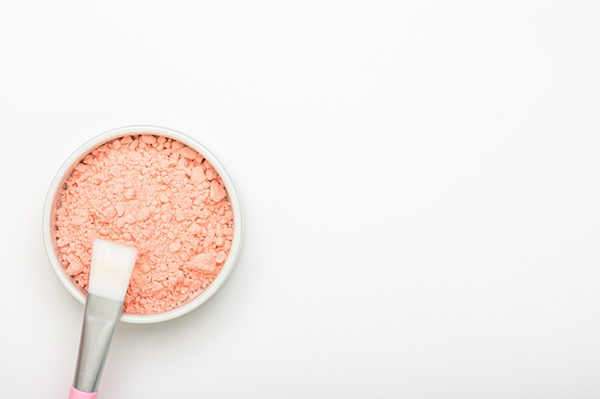

What can I use in place of Epsom salt? Epsom salt has many household uses for medicinal purposes as well as for cleaning. But if you’ve run out of Epsom salt, you’ll likely want to know about good alternatives for Epsom salt. Here are some handy Epsom salt substitutes.

Epsom salt is made of magnesium and sulfate in a rock like formation, and though it resembles table salt, it shouldn’t be consumed or used in cooking. It has a variety of other uses which we’ll describe below.
One myth that’s out there is that Epsom salt can be used as a salt substitute in cooking. But is Epsom salt really an alternative salt for cooking?
No, Epsom salt should never be used for cooking, nor should it be consumed. It can lead to serious side effects if it’s consumed.
If you’ve come here likely you’re interested in learning more about the best substitutes for Epsom salt. Let’s take a look at each one as well as their uses.

What is a good substitute for Epsom salt? There are plenty of therapeutic Epsom salt substitutes to be used. Sea salt is the number one choice.
Sea salt can be used as an Epsom salt alternative, especially when used as a bath salt or foot soak. For how to substitute Epsom salt with sea salt, use a 1 to 1 ratio of sea salt in its place.
Purpose: Bath Salt, Foot Soak, Exfoliating
Ratio: 1 to 1

Can I use salt instead of Epsom salt? On some occasions, you might opt to use table salt in place of Epsom salt. What is a substitute for Epsom salt? Rock salt is one of the most common forms of salt used today. It’s made of sodium and chloride.
For this Epsom salt replacement, use 1/2 cup table salt, 1 tbsp borax and baking soda to make up a concoction that’s suitable.
Purpose: Table salt bath, Bath Salt, Foot Soak
Ratio: ½ cup table salt, 1 tbsp borax and baking soda

Essential oils can make a good Epsom salt substitute. Epsom salt releases magnesium sulfate when it’s mixed with water and can ease sore muscles or joints. It has a relaxing effect.
The role of Epsom salt as a relaxing effect can be substituted with essential oils. Just choose your favorite essential oils such a peppermint or tangerine which are known to help relax.
While essential oils can help relax, they lack the ability to help exfoliate like Epsom salt does. Consider trying essential oils as a replacement for Epsom salt.
Purpose: Relaxing
Essential Oils: peppermint, tangerine essential oils

Apple cider vinegar works well for hair cleansing purposes, cleansing properties, eases aches and pains after a workout. White vinegar is also an option to be used for these same purposes.
To use apple cider vinegar as a substitute for Epsom salt, add 1 to 2 cups apple cider or white vinegar to a warm bath.
Purpose: Bath cleansing, foot soak, relaxation
Ratio: 1 to 2 cups added to warm water

Grains such as oatmeal, barley or bran can be used as a substitute for Epsom salt when the purpose is exfoliation.
Epsom salt has great exfoliation properties for skin. And grains used to make a paste can give some stiff competition when it comes to a solid alternative for Epsom salt.
Purpose: Exfoliation and cleansing
Ratio: Use 1 to 2 tablespoons of oatmeal and mix with enough warm water to form a paste.

Baking soda is also known as sodium bicarbonate and can be used as a substitute for Epsom salt when helping to relieve things such as sunburn, itching skin, and sore muscles. You can add baking soda to a bath for soaking and relief.
Purpose: Soothing relief for itching, sore muscles, and sunburn
Ratio: ½ cup baking soda in warm bath water

Magnesium flakes are good for those who have sensitive skin as well as children who might not be able to tolerate the chemical aspects of Epsom salt. Though Magnesium flakes look similar to Epsom salt, they’re not the same. They do however share some of the similar properties of medical benefits.
Magnesium flakes are made primarily of magnesium chloride. And Epsom salt consists of magnesium sulfate.
Purpose: bath cleansing, foot soak
Ratio: 1 cup added to warm water

Who would think of using mustard powder as an alternate solution for Epsom salt? But historically speaking mustard powder has been used in alternative medicine applications.
Though it doesn’t have all of the same properties as Epsom salt, it is thought to increase blood flow and helps with pain.
Purpose: relaxation or soak
Ratio: 1 to 2 teaspoons added to bath water

What is a good alternative to Epsom salt? Bentonite clay can provide similar soothing properties as Epsom salt when used in a bath. It’s known for being able to absorb toxic chemicals or heavy metals and is used widely in beauty products for this reason.
Purpose: exfoliation
Ratio: 3 cups bentonite clay, mixed with 1 cup warm water to form a paste. Add to running bath water.

Prune juice can be used as a substitute for Epsom salt for constipation. Drinking a serving or two can often help to give relief. If you need assistance, be sure to consult your physician for medical treatment.
Purpose: alleviates constipation
Ratio: 1 to 2 servings
Some of the health benefits of using Epsom salt are that it can help reduce pain, enhances workout performance, helps with constipation relief, it’s good for sleep, and is a rich source of magnesium.
We always recommend consulting a physician before using Epsom salt for any medical needs to make sure it’s safe to do so.
Epsom salt can also be used to help remove splinters, relieves itching, sanitizes, disinfects, alleviates constipation, and increases food production for plants in some cases.
What is the difference between sea salt and Epsom salt? Sea salts are mineral rich and Epsom salts are just magnesium. Sea salts contain a vast amount of minerals including whatever can be found in the ocean. It’s valuable to know the differences of Epsom salt vs sea salt.
Epsom salt vs table salt is quite a difference, though they can be confused as being interchangeable on some occasions. The main difference between Epsom salt and table salt is its chemical makeup. Epsom salt is primarily magnesium sulfate, which is made up of magnesium, oxygen, and sulfur.
On the other hand, table salt has a chemical makeup primarily of sodium and chloride. And so the basic structure of epsom salt vs regular salt has significant differences.
Following are frequently asked questions that relate to Epsom salt substitutes. If you have a question that’s not answered here, please drop it in the comments box below and we’ll be happy to answer it.
There are many uses for Epsom salt. Epsom salt is good for helping to reduce stress, can help alleviate constipation, promotes sleep, reduces muscle pain or swelling, and provides magnesium.
On some occasions, table salt might be able to be substituted for Epsom salt. However, you should know that table salt is 85% sodium chloride, and Epsom salt is mainly magnesium sulfate. Table salt in baths can have benefits.
Salt melts water and it also keeps water from re-freezing by lowering the freezing point. Salt disrupts the equilibrium in water simply by being present.
Himalayan salt is slightly pink in color compared to table salt and it’s made mainly with sodium chloride along with trace minerals of potassium, magnesium, and calcium which give it its light pink color.
Here are some possible substitutes for Epsom salt as a laxative. Castor oil, salt and lukewarm water, coffee, baking soda, high fiber foods, or prune juice are all possibilities. Be sure to consult your physician or seek medical help.
We don’t recommend using Epsom salt or kosher salt in cooking, brewing, or baking. Kosher is purely sodium chloride and Epsom salt is made from magnesium and sulfate.
Sometimes chickens don’t want to drink water, or they don’t drink enough water. A good solution to help your chickens drink more and stay hydrated is to dissolve Epsom salt in coconut water to give them proper nutrients and electrolytes.
To make Epsom bath salts at home, mix 3 cups Epsom salts, ½ cup baking soda, 1 cup sea salt, few drops of essential oils if desired, and dried flowers. Stir all the ingredients together and place in a glass jar with a lid.
Yes, we recommend 3 cups of Epsom salt mixed with ½ cup baking soda and then you can add any other desired ingredients to go along with these.
The difference between Epsom salt and regular salt is their chemical makeup. Epsom salt is made up of Magnesium, Sulfate, and Oxygen whereas table salt is made up of sodium chloride.
Sea salt or magnesium flakes work well as a substitute for Epsom salt when being used as a foot soak.
No, Epsom salt should not be used in cooking and shouldn’t be consumed as it has serious side effects.
Epsom salt has been thought to draw out infection, however caution should be used when using it for this purpose because it could cause irritation and make matters worse in some situations by irritating the wound.
Be sure to seek medical advice when using Epsom salt for this purpose.
Baking soda and sea salt is one of the best alternative solutions for making bath salts without Epsom salt. You can use ½ cup baking soda, 1 cup sea salt, and a few drops of essential oils if desired.
We recommend consulting your physician when determining whether it’s safe to soak an open wound in Epsom salt. Because of the nature of Epsom salt, it can be unsafe to do so on some occasions.
To make homemade bath soaks consider mixing 1 cup Epsom salt, 1 cup Himalayan salt, and add any dried flowers or essential oils if desired.
Epsom salt can be used for cleaning purposes around the house and can be used to help minimize or absorb odor. Mixing Epsom salt with club soda, using a 1:1 ratio can make a great refrigerator cleaning solution that cuts away grease and minimizes odor.
When trying to absorb odor in the air, make sure you’ve eliminated the source of the odor first, and then spread a pan of charcoal and sprinkle it liberally with Epsom salts. Let stand for several days to help eliminate the odor.
Whether you’re seeing an Epsom salt substitute for infection, Epsom salt substitute for bath bomb, Epsom salt substitute for foot bath, Epsom salt substitute ingrown toenail, Epsom salt substitute for sore muscles or whatever your situation might be, we trust that you’ve found the list of substitutes as well as purposes of each one helpful.